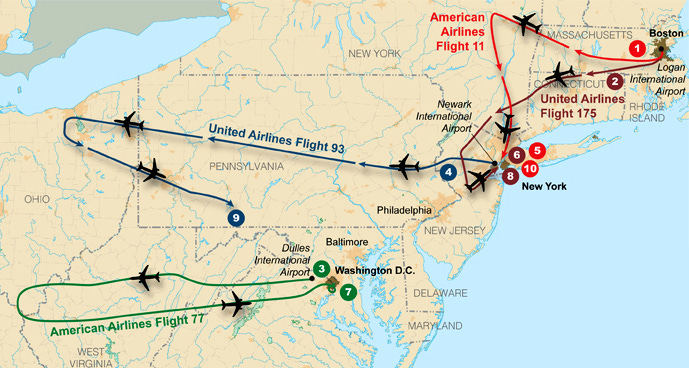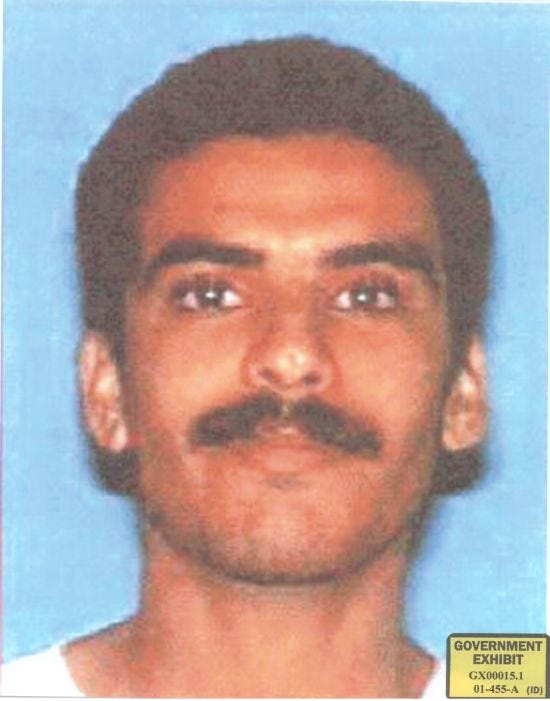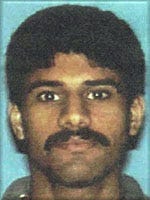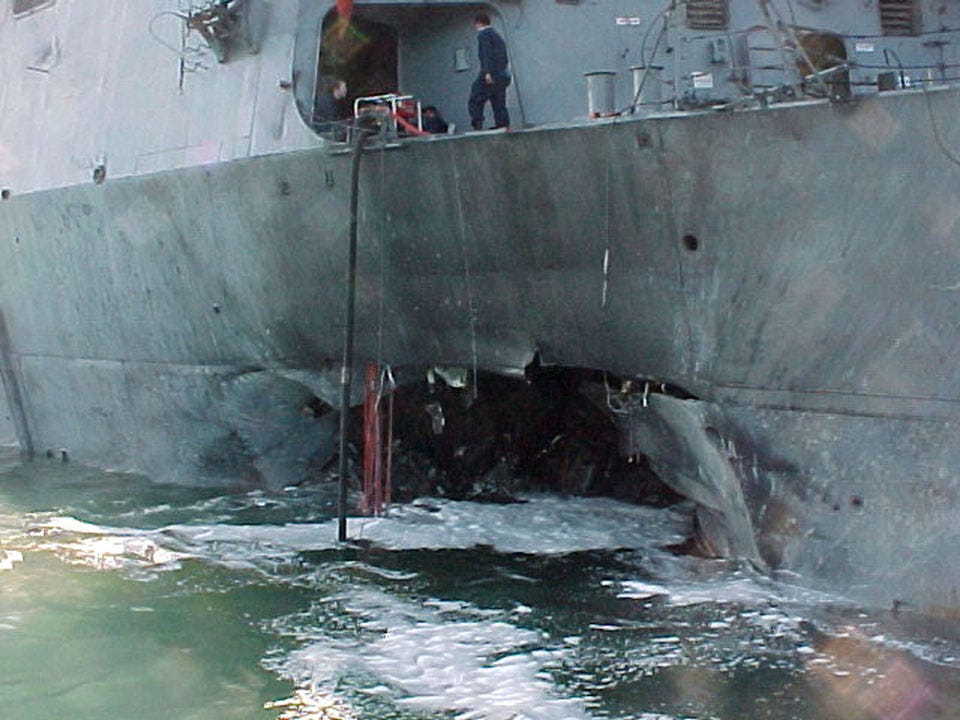(Originally published on 9/11/2022.)
(To explain the full impact of 9/11 on American history, I need to write three essays. This first essay deals with the attack itself*. The second, which I will publish in December, will deal with our immediate response in Afghanistan. The third will deal with America’s two-decade war in Afghanistan and the parallel hunt for Osama bin Laden and his deputy Ayman al-Zawahiri.)
21 years ago today, I was on duty at CIA Headquarters. There was confusion after the first plane crashed into the North Tower of the World Trade Center at 8:46 am. Confusion turned into shock when the second plane hit the South Tower at 9:03 and we realized that we were under attack. When the third plane hit the Pentagon at 9:37 and the fourth crashed in Pennsylvania at 10:03 thanks to the resistance of heroic passengers, shock turned into a raw, guilt-ridden rage.
There is plenty of blame to spread around the US Government for this failure to protect our citizens. In 1995 during the Clinton Administration, the Justice Department created “the wall” that discouraged information sharing between intelligence and criminal officers. This was legitimately intended to protect the privacy of American citizens. However, “the wall” inadvertently prevented cooperation between the CIA and the FBI that could have prevented 9/11.**
In the first part of 2001 during the Bush Administration, policymakers de-prioritized counterterrorism in favor of greater priority on issues involving China and Russia. The Intelligence Community desperately warned on 6 August 2001 that Bin Laden wanted to strike the American homeland, but distracted policymakers were too slow to act.
That said, the CIA was and is our nation’s first line of defense against international terrorism. On 10 September, 99% of American citizens had never heard of Osama bin Laden. The CIA knew him very well, however; we knew his objectives and we saw an attack on the homeland coming. Yet we failed to prevent it. How?
Tidbits of Intelligence
For the US Government, the 9/11 case begins with some tidbits of intelligence we received in January 2000. A communications intercept indicated that two suspect Al Qaeda members named Khalid and Nawaf had travelled to Kuala Lumpur, Malaysia for meetings of some sort on 5-8 January. On the evening of the 8th, Khalid, Nawaf, and a third man named Saleh had traveled from Kuala Lumpur to Bangkok, Thailand. Foreign partners provided us passport photos as well as the full names of the three men; Khalid al-Mihdhar, Nawaf al-Hazmi, and Saleh Saeed Mohammed bin Yousaf. In March 2000, we learned that Mihdhar and Hazmi had departed Bangkok and arrived on 15 January in Los Angeles, California.
CIA Headquarters did not directly advise FBI Headquarters that Mihdhar and Hazmi had traveled to the US. The information was included in an operational cable which the author thought would be disseminated to the FBI intelligence officers assigned to the Counterterrorism Center. It was available to them, but for some unknown reason it never reached FBI criminal investigators.***
This CIA failure to directly advise the FBI Headquarters was a mistake -- not intentional -- but a big mistake.
Mihdhar and Hazmi were the first two 9/11 hijackers that Al Qaeda sent to the US. One of their missions was to test for gaps in our counterterrorism defenses. Two weeks after their arrival in Los Angeles, they moved to San Diego where they rented an apartment in true name. They listed Hazmi’s name in the telephone directory which would have been discoverable at the time by a simple Lexus-Nexus search. They began taking flight training courses despite having no flying experience and speaking no English. In sum, Mihdhar and Hazmi stood out as being odd but, absent a CIA warning to the FBI, they did not set off any alarm bells.
Had the FBI been aware, they would have easily located the two men in San Diego, put them under surveillance, and eventually arrested or expelled them. FBI action against Mihdhar and Hazmi in the March/May timeframe would at minimum have forced a delay in the 9/11 plot because Al Qaeda did not send the lead 9/11 pilots to the US until May/June 2000.
A Second Lost Opportunity: The USS Cole Attack
The USS Cole was a billion-dollar destroyer beginning its second deployment to the Middle East in the fall of 2000, a month before the US Presidential elections. After transiting the Suez Canal into the Red Sea, it needed to refuel somewhere. The choices were the French Naval Base in Djibouti or the Yemeni port of Aden. US ships, including the Cole, had used Djibouti without incident for years but it was expensive. This time the ship was ordered to Aden, the most lawless and radicalized spot on the Arabian Peninsula.
The ship moored on 12 October 2000 at 9:30 AM, started fueling at 10:30, and was scheduled to depart that same afternoon. A little after 11:00, Ibrahim al-Thawar and Hassan al-Khamri steered a thirty-five-foot skiff towards the Cole. The ship sentries saw them coming but didn’t see them as a threat. There were a number of other small boats coming and going and the two men in this one appeared friendly.
As the two men pulled alongside the high-tech Man of War, they stood at attention and saluted their victims. Then, they detonated a shaped charge of C4 explosives, blasting a 40x60 foot hole through the armored hull and killing seventeen sailors lining up for lunch just inside it.
CIA gut instincts told us that this was the work of Al Qaeda. The attack had Bin Laden’s signature audacity, imagination, and symbolism. He was speaking to the Islamic Ummah, showing how two brave Muslims could humble the greatest military power on Earth.
Our instincts about Bin Laden’s role were not fully confirmed until 2003. At the time, nothing in CIA data bases could prove our instincts. Even with the benefit of 20-20 hindsight, we could find no clues, zero dots to connect.
Subsequent investigation revealed the terrorists had left their car and boat trailer near the boat ramp. The car was registered to the deceased Thawar but the trailer was registered to a Fahd al-Quso, who was duly arrested by Aden police.
Police checks of passport and travel records revealed that Thawar and Quso had made a suspicious trip to Bangkok together on 4 January 2000, returning to Aden on 11 January. Quso admitted that he and Thawar had intended to travel to Kuala Lumpur to meet a terrorist named Khallad. When they were denied Malaysian visas, Khallad had met them in Bangkok and provided them guidance on the operation.
This rang a bell for a CIA analyst who pulled from our databases - an intelligence agency is only as good as its databases - the reporting from January 2000 about Khalid al-Mihdhar, Nawaf al-Hazmi, and Saleh Saeed Mohammed bin Yousaf. At this point, we thought that Khalid al-Mihdhar might be the terrorist known to Quso as Khallad.
We sent copies of the passport photos to the Aden police to show Quso. To our great surprise Quso immediately identified the photo of Saleh Saeed Mohammed bin Yousaf as the terrorist he knew as Khallad. Quso revealed that Khallad had lost a leg during a battle in Afghanistan and had received medical care thanks to the generosity of Osama Bin Laden.
This was of great importance. We had a dot of information about one man, Quso, connected to the Cole bombing. We had another dot of information about another man, Saleh bin Yousaf, connected to Bin Laden. The Bangkok trip was a line connecting those two dots, linking Bin Laden to the Cole attack.
Immediately, we sent the three photos to foreign partners to see if they could provide us any further information. They knew little about Khalid al-Mihdhar and Nawaf al-Hamzi. They knew a lot about the man known as Saleh bin Yousaf, however. His true name was Tawfiq bin Attash but he usually went by the alias Khallad. He was a highly trusted associate of Osama Bin Laden and was said to have organized the 1998 attacks on the American Embassies in Kenya and Tanzania.
Bingo. By mid-January 2001, we could tell outgoing President Clinton and incoming President-Elect Bush that a highly trusted associate of Bin Laden had provided operational guidance to the perpetrator of the Cole attack.
Unfortunately, neither administration did anything about it ostensibly because “The US did not have evidence about Bin Ladin’s personal involvement in the attack”.
Richard Clarke, the Counterterrorism policy coordinator at the White House in both the Clinton and Bush administrations, was terribly frustrated. On 4 September 2001, he wrote to the President’s National Security Advisor “The fact that the USS Cole was attacked during the last Administration does not absolve us of responding to the attack. Many in Al Qaeda and the Taliban may have drawn the wrong lesson from the Cole: that they can kill Americans without there being a US response, without there being a price”.
The CIA is an intelligence agency not a policy agency. Whether or not we shared Clarke's frustration, our responsibility was to get on with the business of intelligence. In particular, we should have renewed our focus on Nawaf al-Hazmi and Khalid al-Mihdhar -- those two men that we now knew had consulted with Kallad, aka Saleh Saeed Mohammed bin Yousaf, true name Tawfiq bin Attash, the highly trusted associate of Osama Bin Laden with responsibility for operational matters.
CIA Headquarters assumed FBI Headquarters was aware of the Kallad-Hazmi-Mihdhar connection via their intelligence officers assigned to the Counterterrorism Center. We should have made absolutely sure of it. In January 2001, had the CIA explicitly warned that two Al-Qaeda members had come to the US after spending several days conferring with a highly trusted associate of Osama Bin Laden, the FBI would have had eight months to unravel the plot and probably would have.
The Tragic Endgame
During the summer of 2001 there was a dramatic increase in terrorist threat reporting that Bin Laden and Al Qaeda were planning something spectacular, probably overseas but possibly in the American homeland. CIA Director George Tenet said that “the system was blinking red.” Some policymakers in the new administration considered the threat reporting exaggerated. Tenet pushed back with a Presidential Daily Brief (PDB) on 6 August entitled, “Bin Laden Determined to Strike the US.” The PDB noted that the FBI had 70 full field investigations open on suspect Bin Laden related cases at the time.
Spurred by this intense concern, on Tuesday, 21 August, an FBI intelligence officer assigned to the CIA Counterterrorism Center was reviewing the back files and came across the March 2000 cable which reported that Mihdhar and Hazmi had traveled to the US on 15 January 2000. She immediately grasped the significance of this information.
That same day, she drove the ten miles from CIA Headquarters to FBI Headquarters and asked the INS Representative there to run a check on the two names. On Wednesday, 22 August, the INS Representative reported that both men had arrived in the US on 15 January 2002. Hazmi had never left. Mihdhar departed the US on 9 June 2000 but had returned via New York City on 4 July 2001.
She drafted a cable for the FBI office in New York City requesting that they locate Mihdhar and determine his contacts and reasons for being in the US. To add urgency, she also called a friend at FBI/New York City to give him a heads-up that the cable was coming. The cable was not sent from FBI/Headquarters to FBI/New York City until Tuesday, 28 August, and marked “routine” which meant New York City had 30 days to respond.
The FBI Supervisor in New York City who had action on the cable formally assigned it to a young intelligence officer but also passed a copy to an experienced criminal investigator who was working the USS Cole investigation.
This experienced criminal investigator called the FBI intelligence officer in the Counterterrorism Center and asked for further information. The intelligence officer was apologetic but said “the wall” prohibited the criminal investigator from taking part in the search for Mihdhar.
The criminal investigator responded angrily, “Someday someone will die—and wall or not—the public will not understand why we were not more effective and throwing every resource we had at certain problems”.
The young intelligence officer assigned the case had never worked counterterrorism. He made some perfunctory efforts to locate Mihdhar in New York City. Early on the morning of 11 September, he sent a cable to the FBI office in Los Angeles to see if they might help. He had 17 more days to respond to the cable from FBI Headquarters.
At that moment, Nawaf al-Hazmi had been living openly in true name for three months in Paterson, New Jersey, 20 miles away. Mihdhar and five of the other hijackers were living with him in a one-bedroom apartment. On 9/11, five of them were on the plane that crashed into the Pentagon, one of them was on the plane that destroyed the North Tower of the World Trade Center, and one of them was on the plane that destroyed the South Tower. Nearly 3,000 people died.
Assessment of Our Performance
We should have prevented 9/11. We were defeated by a smart and determined foe, Osama bin Laden.
Using our system of (+) for got it right, (-) for got it wrong, and (0) for neutral, the collectors and the analysts both deserve a (-) because someone should have acted on the March 2000 cable or on the January 2001 identification of Kallad. Leadership gets a (-) because it was ineffective.
(*) The intelligence details in this essay are all taken from the 9/11 Commission Report, which is available on-line.
(**) For those interested in “the wall”, I recommend reading the Justice Department Inspector General report of November 2004, “A Review of the FBI’s Handling of Intelligence Information Prior to the September 11 Attacks,” which is available on-line. Six weeks after the attack, on 26 October 2001, “the wall” was abolished by The Patriot Act.
(***) The spies in CIA’s Operations Directorate write intelligence reports which are disseminated throughout the government and operational cables which as a rule are reserved for members of the Operation Directorate. The exception to this rule are the “Centers” like the Counterterrorism Center which has a mix of people from the Operations and Intelligence Directorates as well as intelligence officers from other agencies like the FBI. It was the common understanding amongst us spies that in those Centers operational cables were available to everyone as well as to their home agency.









